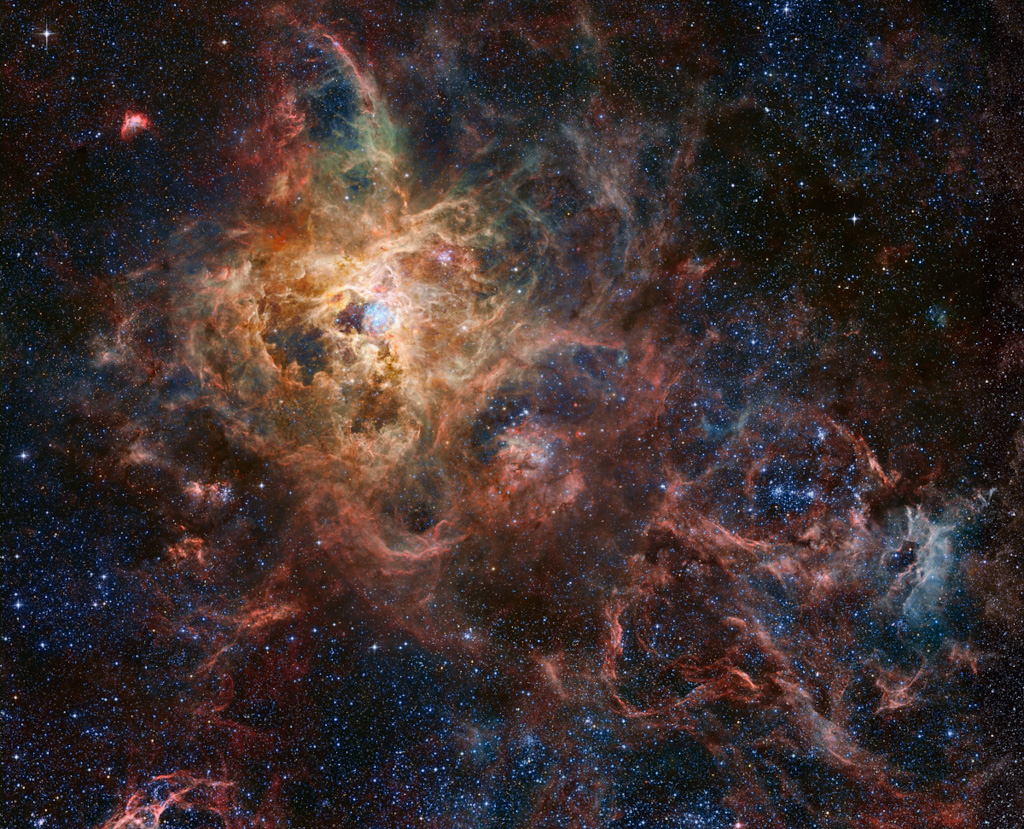2019 September 4
The Spider Nebula in Infrared
Image Credit: NASA, JPL-Caltech, Spitzer Space Telescope, 2MASS
Explanation: Will the spider ever catch the fly? Not if both are large emission nebulas toward the constellation of the Charioteer (Auriga). The spider-shaped gas cloud on the left is actually an emission nebula labelled IC 417, while the smaller fly-shaped cloud on the right is dubbed NGC 1931 and is both an emission nebula and a reflection nebula. About 10,000 light-years distant, both nebulas harbor young, open star clusters. For scale, the more compact NGC 1931 (Fly) is about 10 light-years across. The featured picture in scientifically-assigned, infrared colors combines images from the Spitzer Space Telescope and the Two Micron All Sky Survey (2MASS). Spitzer is celebrating its 16th year orbiting the Sun near the Earth.
蜘蛛星云的红外影像
影像来源与版权: NASA, JPL-Caltech, Spitzer Space Telescope, 2MASS
说明:这只蜘蛛能抓住苍蝇吗?虽然看上去很像,但它们都是位于御夫座方向的大型发射星云。影像左侧的蜘蛛状气体云实际上是一个编录号为IC 417的发射星云,而右侧较小的苍蝇状气体云被编录为NGC 1931,它既是发射星云,也是反射星云。这两个星云距离我们约1万光年远,拥有许多年轻的疏散星团。更致密的苍蝇星云NGC 1931跨度约为10光年。这幅经过科学上色的红外特征影像是由斯皮策太空望远镜和2微米巡天计划望远镜所拍摄的照片合成的。邻近地球的斯皮策太空望远镜正在庆祝其绕太阳运行的第16年。



